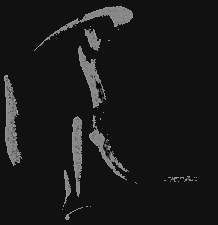Zero-Horizon as the Ideological Successor to Marginal Art
1. Tsurumi Shunsuke’s Definition of “Marginal Art”

Tsurumi presented “Marginal Art” as a boundary expression that exists between institutionalized art proper and folk or everyday art within the framework of social systems.
For him, the term “margin” referred to the social and institutional boundary of art,
not to an ontological or metaphysical limit of artistic being itself.
In other words, Tsurumi’s concept of Marginal Art concerns the social boundaries between
“art and everyday life,” “the professional and the amateur,” and “culture and custom,”
belonging to a dimension distinct from the philosophical or metaphysical horizon explored in Zero-Horizon Theory.
Tsurumi Shunsuke’s concept of Marginal Art sought to liberate art from the center of social structure.
The Zero-Horizon Theory of Photographic Art extends this liberation further—
it seeks to release art from the very center of ontological structure.
The ultimate purpose of both is the same:
to return art to life itself.
Therefore, the relationship between the two is not one of rupture but of deepened succession—
Zero-Horizon stands as the ontological successor to Marginal Art.
